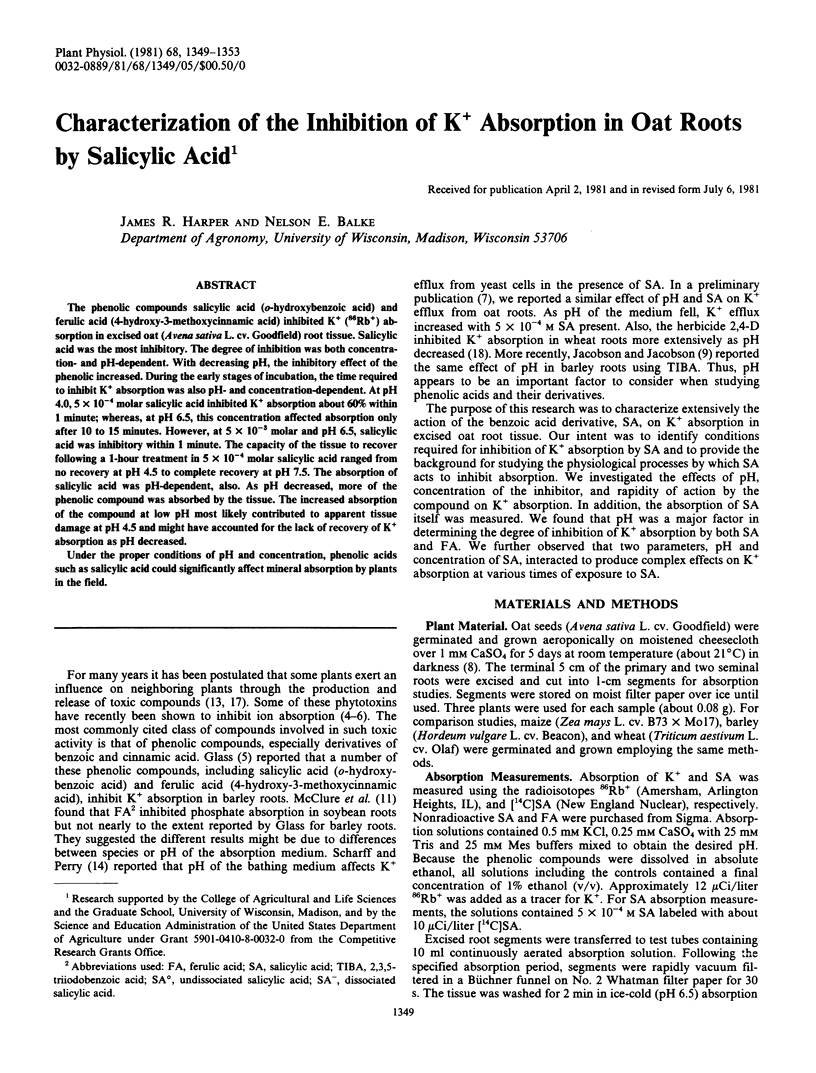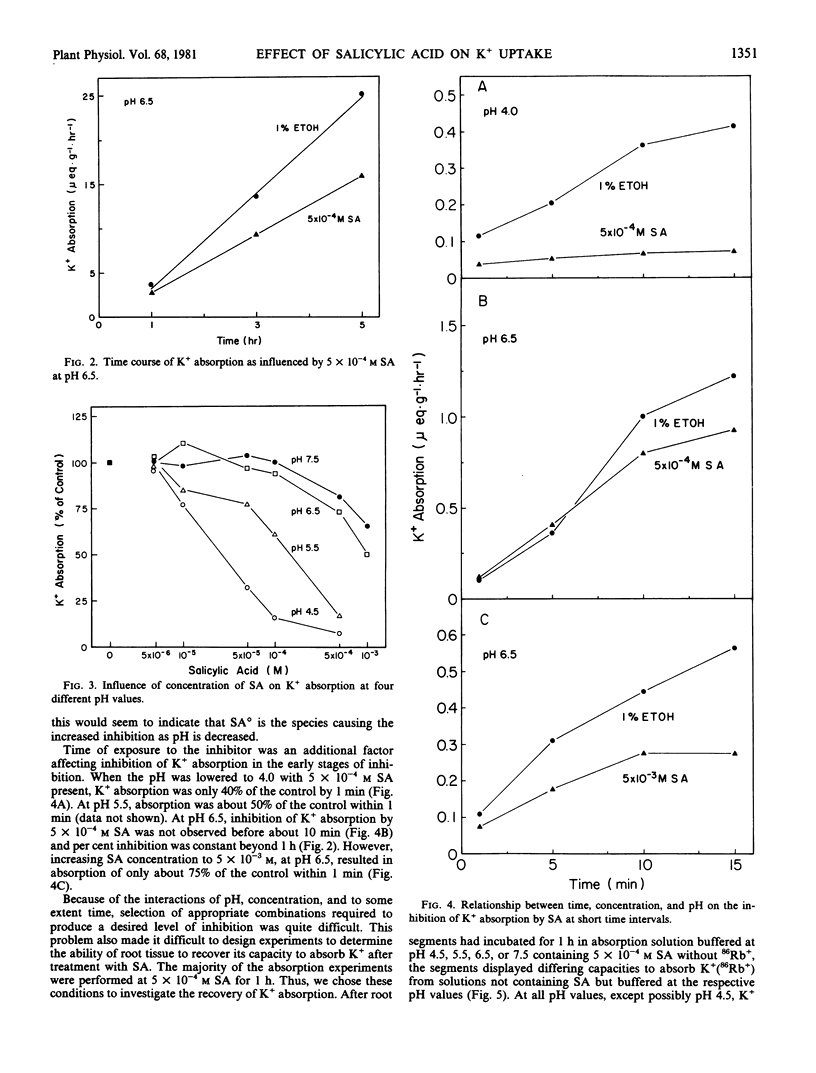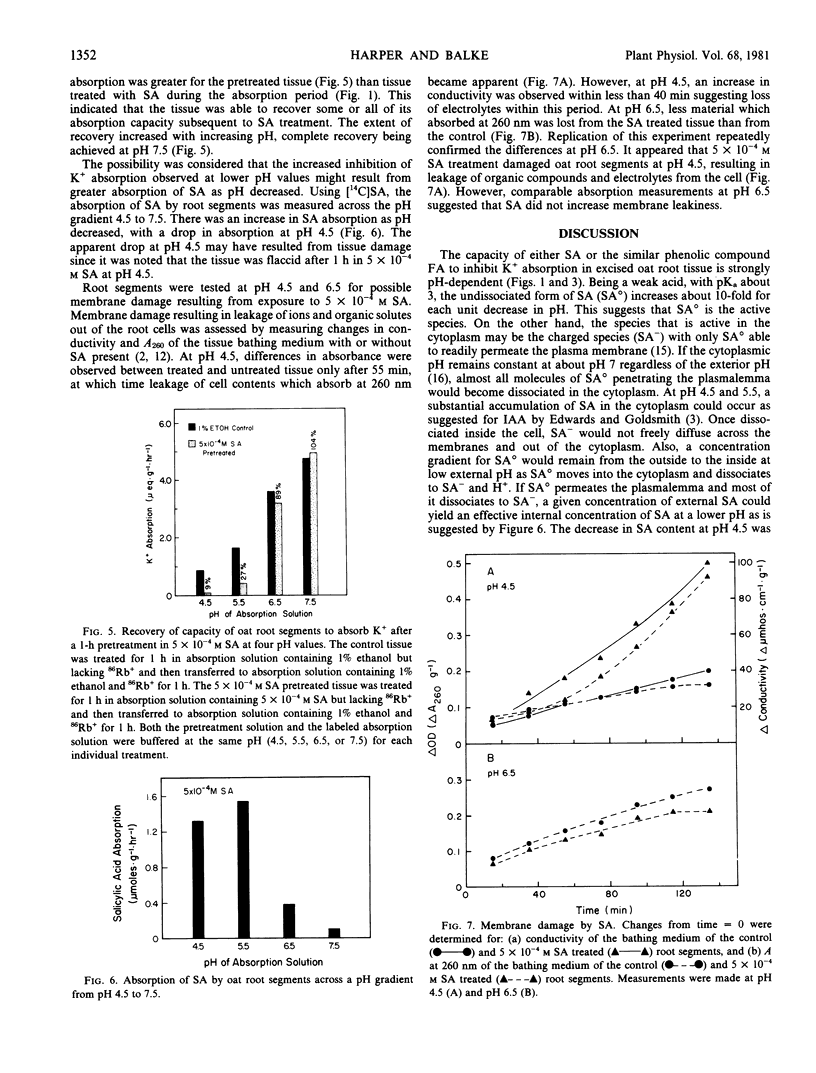Abstract
The phenolic compounds salicylic acid (o-hydroxybenzoic acid) and ferulic acid (4-hydroxy-3-methoxycinnamic acid) inhibited K+ (86Rb+) absorption in excised oat (Avena sativa L. cv. Goodfield) root tissue. Salicylic acid was the most inhibitory. The degree of inhibition was both concentration- and pH-dependent. With decreasing pH, the inhibitory effect of the phenolic increased. During the early stages of incubation, the time required to inhibit K+ absorption was also pH- and concentration-dependent. At pH 4.0, 5×10−4 molar salicylic acid inhibited K+ absorption about 60% within 1 minute; whereas, at pH 6.5, this concentration affected absorption only after 10 to 15 minutes. However, at 5 × 10−3 molar and pH 6.5, salicylic acid was inhibitory within 1 minute. The capacity of the tissue to recover following a 1-hour treatment in 5 × 10−4 molar salicylic acid ranged from no recovery at pH 4.5 to complete recovery at pH 7.5. The absorption of salicylic acid was pH-dependent, also. As pH decreased, more of the phenolic compound was absorbed by the tissue. The increased absorption of the compound at low pH most likely contributed to apparent tissue damage at pH 4.5 and might have accounted for the lack of recovery of K+ absorption as pH decreased.
Under the proper conditions of pH and concentration, phenolic acids such as salicylic acid could significantly affect mineral absorption by plants in the field.
Full text
PDF




Selected References
These references are in PubMed. This may not be the complete list of references from this article.
- Duke S. H., Kakefuda G. Role of the testa in preventing cellular rupture during imbibition of legume seeds. Plant Physiol. 1981 Mar;67(3):449–456. doi: 10.1104/pp.67.3.449. [DOI] [PMC free article] [PubMed] [Google Scholar]
- Glass A. D. Influence of phenolic acids on ion uptake: I. Inhibition of phosphate uptake. Plant Physiol. 1973 Jun;51(6):1037–1041. doi: 10.1104/pp.51.6.1037. [DOI] [PMC free article] [PubMed] [Google Scholar]
- Hodges T. K., Leonard R. T. Purification of a plasma membrane-bound adenosine triphosphatase from plant roots. Methods Enzymol. 1974;32:392–406. doi: 10.1016/0076-6879(74)32039-3. [DOI] [PubMed] [Google Scholar]
- Jacobson A., Jacobson L. Inhibition of respiration and ion uptake by 2,3,5-triiodobenzoic Acid in excised barley roots. Plant Physiol. 1980 Jun;65(6):1220–1223. doi: 10.1104/pp.65.6.1220. [DOI] [PMC free article] [PubMed] [Google Scholar]
- Parrish D. J., Leopold A. C. Transient changes during soybean imbibition. Plant Physiol. 1977 Jun;59(6):1111–1115. doi: 10.1104/pp.59.6.1111. [DOI] [PMC free article] [PubMed] [Google Scholar]
- Scharff T. G., Perry A. C. The effects of salicylic acid on metabolism and potassium ion content in yeast. Proc Soc Exp Biol Med. 1976 Jan;151(1):72–77. doi: 10.3181/00379727-151-39146. [DOI] [PubMed] [Google Scholar]


